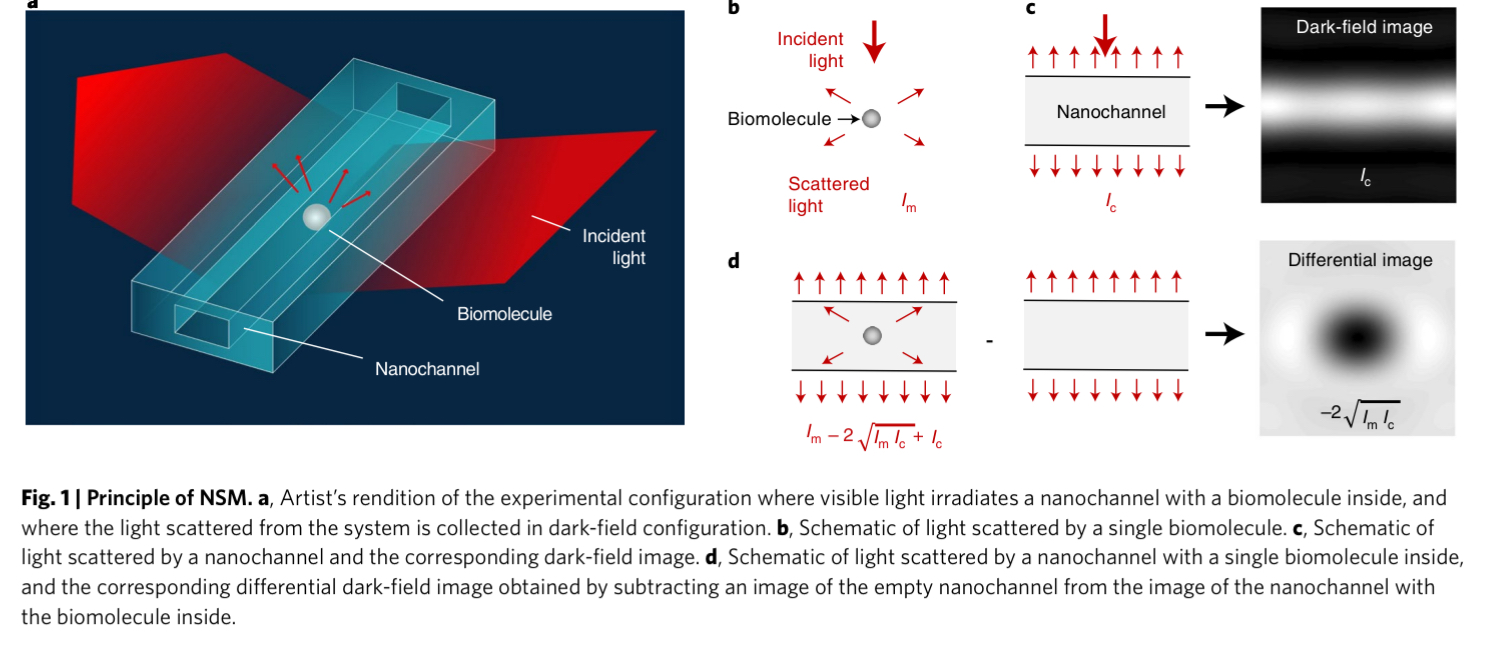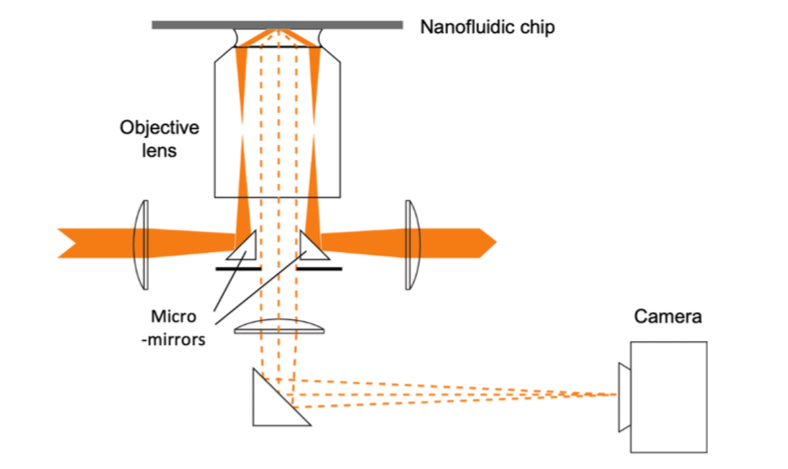NSM
- Source: [[ @spackova2022 Label-free nanofluidic scattering microscopy of size and mass of single diffusing molecules and nanoparticles ]]
- Tags: #nanoparticle-sizing #nanochannels #nanoparticle-tracking-analysis

This paper displays an approach very similar to the one implemented by Dispertech , just that instead of using hollow optical fiber , they use a nano-fluidic chip with a rectangular cross section. The other difference is that they use a dark-field illumination approach, and instead of detecting the direct scattering from the particle , they measure in a mode similar to iSCAT (see also: 202212091127 iSCAT for refractive index of EVs ).
The principle of operation is that the nano-channel becomes a scatterer (sub-diffraction), and the particle inside creates an interference pattern that can be detected by a microscope. The signal is processed similarly to iSCAT, but in this case particles are moving in 1-D.
Since the interference is happening at short scales (between the channel and the particle), I wonder if it is possible to use low-coherent sources, such as LED's instead of a laser (the paper uses a supercontinuum, delivering

The setup is a dark-field microscope (also see: 202310101212 Stereo Darkfield Interferometry ) built on a Madcity Labs modular microscope (the micro-mirrors can move).
I wonder why the choice of going for the "TIR" ( total internal reflection ) type of approach and not a classical dark-field with a stop in the center.
Also, is it possible to replace the lens for a cylindrical lens to increase the intensity at the channel?
The technology is commercialized by Envue .
Backlinks
These are the other notes that link to this one.
